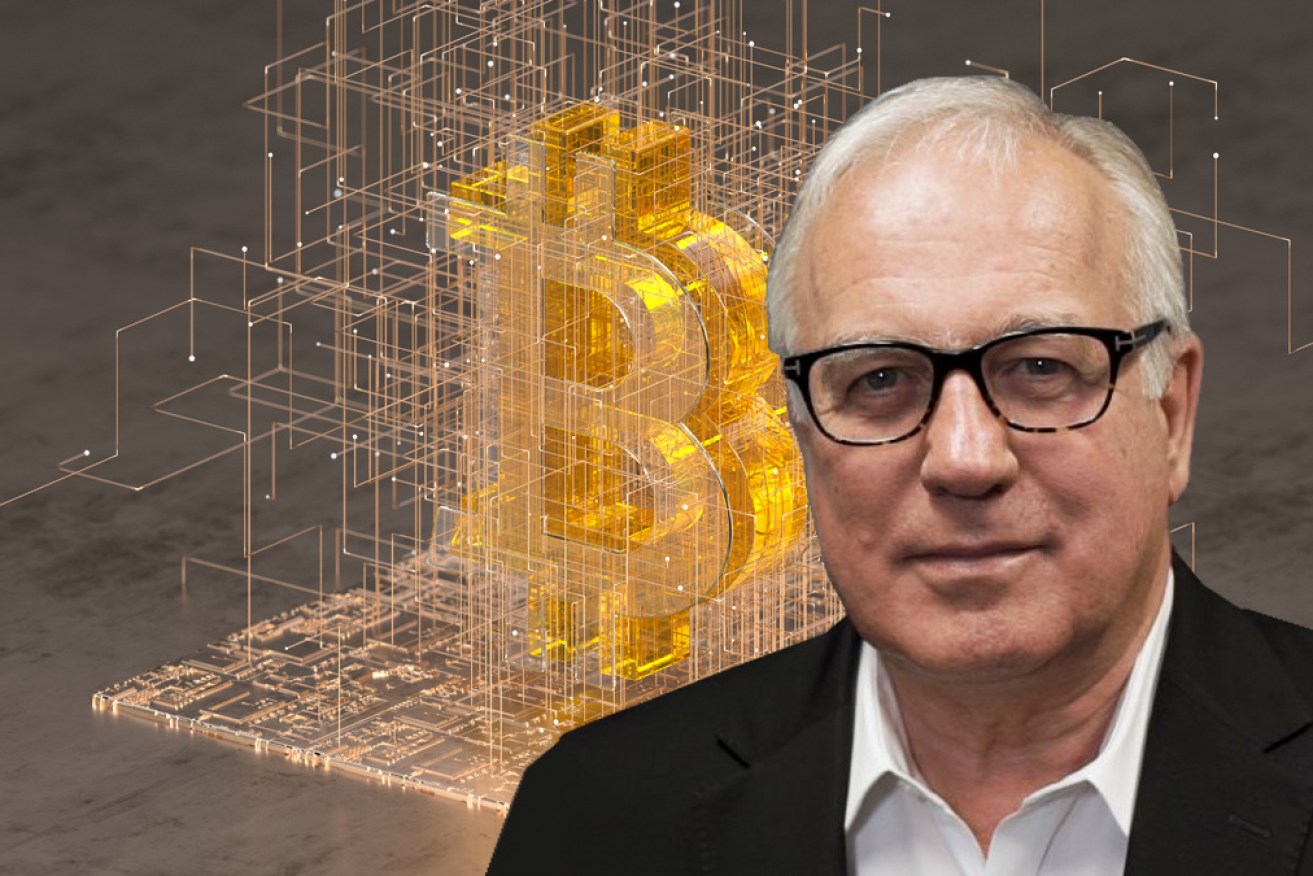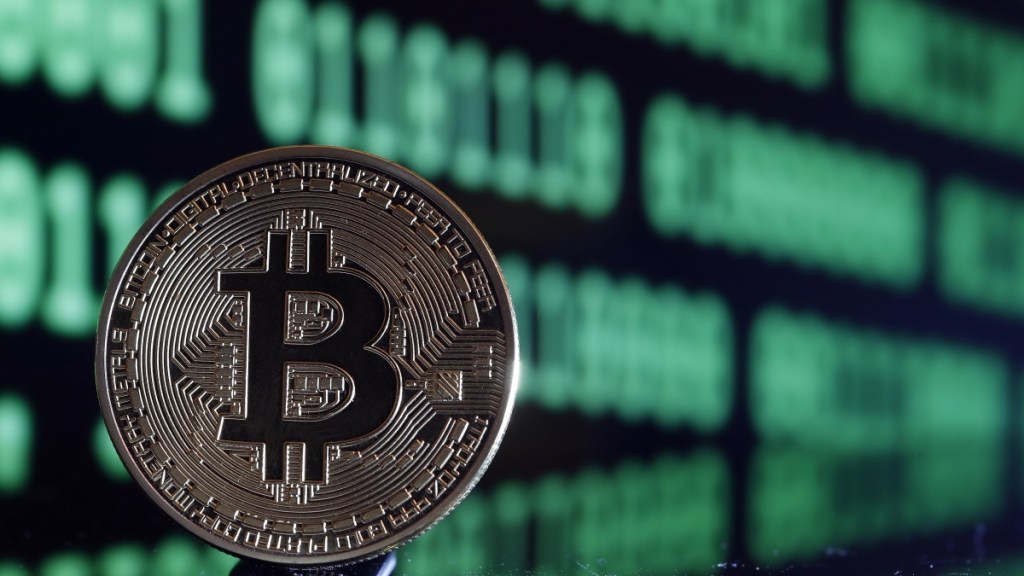Alan Kohler: Bitcoin is not a Ponzi bubble. It’s worse – an insurrection


There is far more to cryptocurrencies than playing pass the parcel with a speculative asset, writes Alan Kohler. Photo: TND
The price of a bitcoin briefly hit a record high this week, and in Australian dollars it went above $100,000 for the first time
When it crashed 75 per cent in 2022, a lot of people felt vindicated and many were inclined to predict, perhaps a bit too gleefully on reflection, that it would go to zero.
That seemed reasonable. Bitcoins are digital ephemera created from nothing and good for nothing – it seemed obvious the whole thing was a scam, a Ponzi scheme and/or a bubble.
Well, inconveniently, the price started rising again as 2023 began and, having tripled in a year, is back to where it was. The bursting of the bitcoin Ponzi bubble will have to wait; maybe next time.
Actually, it will never go to zero and the sceptics are doomed to be perpetually perplexed.
Bitcoin will probably crash again but it is neither a Ponzi scheme nor a bubble – it’s something far worse: It is an inherently secure, tightly-controlled asset with a regulated supply, and is therefore a subversion to the whole basis of free-market financial capitalism.
Ponzis and bubbles are a normal part of the system that allow regulators to tighten their (largely ineffective) control, but a security that regulates itself? That’s an insurrection.
Inflation, then halving
This is the fourth big bitcoin inflation, and it coincides with the fourth “halving” that takes place next month, probably on April 19, which also happens to be the 40th anniversary of Advance Australia Fair becoming our national anthem.
The four previous bitcoin bubbles began, like this one, about a year before each of the previous halvings in 2012, 2016 and 2020, and ended a year after them.
The one due next month is having the same effect, and it’s being amplified by the creation of a series of ETFs by Wall Street investment houses that allow investors to buy bitcoins more easily – that is, without having to have a mysterious digital wallet and deal with one of those crypto exchanges.
Inflows into the ETFs are running at more than US$600 million per day, and BlackRock’s iShares Bitcoin Trust has become the fastest-ever ETF to reach US$10 billion.
It seems reasonable to assume the price will go a lot higher this time than the previous peak as those ETFs try to buy bitcoins they must when the supply is limited, and about to get more limited.

The bitcoin all-time high marks a turning point for cryptocurrency. Photo: Getty
A halving is where the computing power required to “mine” bitcoins yields half as many units as it did before.
The process was established by the inventor of bitcoins, Satoshi Nakamoto (which is assumed to be a pseudonym, although nobody knows for sure) when they created the “genesis block”, that is the first lot of bitcoins, on January 3, 2009, along with a cryptic note that said: “The Times 03/Jan/2009 Chancellor on brink of second bailout for banks”, thought to explain why they did it.
They had published a white paper titled Bitcoin: A Peer-to-Peer Electronic Cash System on a cryptography mailing list in October, and kicked off the blockchain with a genesis block of 50 bitcoins two months later.
Bitcoin mining is designed to maintain the blockchain and involves spending vast amounts of computing power, and therefore electricity. So most miners are located up near cheap power that is usually, but not always, renewable.
The miners have to group and broadcast new transactions into blocks, which are then verified by the network. Each block must contain a proof of work (PoW) that was designed by Satoshi Nakamoto and involves finding a nonce (an arbitrary number used in cryptography).
To cut short a long, complicated story, it is very hard to do, but it works fine as a business if you get organised.
For example, Australian bitcoin miner Iris Energy mined 341 bitcoins in January at an average electricity cost of US$18,705 per bitcoin, and it sold them for an average of US$42,436 each, so a gross profit margin of 56 per cent. With the price now 50 per cent higher, and if electricity costs stayed the same, the margin would now be 70 per cent assuming the same cost of electricity.
Tightly controlled asset
There are three ways in which the bitcoin system is inherently regulated – not by any governments or central banks, but only by an inbuilt design that can’t be changed.
First, the difficulty of generating a block (basically a box of data) is adjusted based on the mining power on the network by recalibrating the difficulty target every 2016 blocks (which is about every two weeks) to maintain an average time of 10 minutes between new blocks.
Second, the reward is halved every 210,000 blocks, or about every four years. At first, each block produced 50 bitcoins, then in 2012, it shrank to 25, in 2016, 12.5, then 6.25 in 2020, and on April 19 this year it will be cut to 3.125.
And third, this will happen until a total of 21 million bitcoins is reached, after which, that’s it – no more can be mined. That’s due to happen in 2140.
This, I submit, makes bitcoins the most tightly controlled financial asset known to man. It continually becomes scarcer until a preset limit is reached.
Other securities, like bonds and shares, can be issued by companies and governments at will, as long as they do the paperwork, and as for money … well, since the Federal Reserve Board was created in 1913, so many US dollars have been issued that its purchasing power has declined by about 97 per cent.
As for where bitcoin will end up, and what its place in society will be – will it become a means of transaction, a store of wealth or just a plaything for speculators – I have no idea, but I’m reminded of the gag by Chinese premier Zhou Enlai in 1972, when asked what he thought the impact of the French revolution would be, and he answered: “It’s too early to tell.”
(Actually, he was apparently referring to the Paris riots of 1968, not the 1789 revolution, but that’s not as good a story).
Bitcoin has been going for 15 years. Paper money was invented in China in the 11thcentury and Marco Polo brought the idea back to Europe. Merchants used promissory notes until governments started taking over the promises in 1668 with the creation of the Swedish Riksbank, followed by the Bank of England in 1694.
In 1816, Thomas Jefferson declared that “banking establishments are more dangerous than standing armies; and that the principle of spending money to be paid by posterity, under the name of funding, is but swindling futurity on a large scale”.
He was proved right many times – in 1892, 1907, 1929, 1982, 1989 and 2008.
So bitcoin might look like a Ponzi bubble because its price is volatile and it seems to be in the grip of speculators and scam artists, but in fact it may be the only thing that isn’t one.
Alan Kohler writes twice a week for The New Daily. He is finance presenter on the ABC News and also writes for Intelligent Investor.








